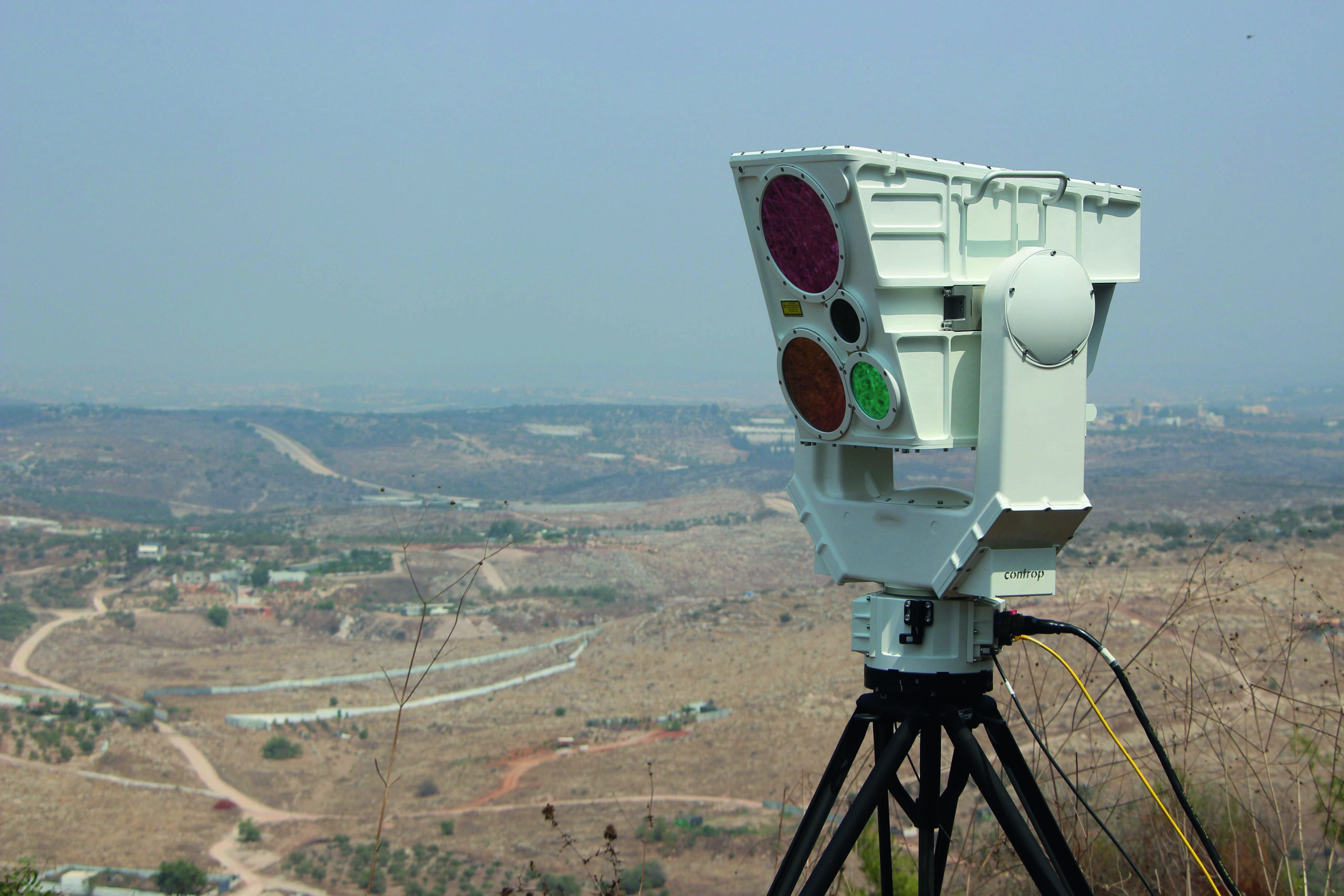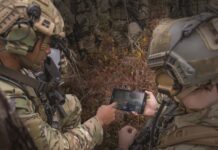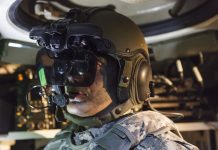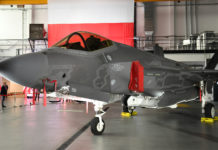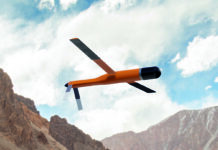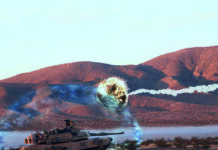Government and military authorities have always valued intelligence as a critical asset for
decision-making and for its ability to respond to developments at the strategic or tactical level. Being informed and pre-warned, authorities can plan, assess, prepare, and respond to unfolding events in order to shape the outcome of events in their favour.
In the modern era, intelligence comes in many forms, utilising different information-gathering techniques. Still, the oldest and most common is Visual Intelligence (VISINT), obtained by the sight of an individual human observer or through various optical or electronic sensors able to enhance human vision.
Typical surveillance and reconnaissance systems are designed to extend human visibility using optical or electronic (Electro-Optics – EO) means, various night vision devices and thermal sensors operating in the swaths of the infrared (IR) waveband to enable a human to see during the day and at night. Thermal imaging differentiates targets from their surroundings by highlighting the differences between ambient temperature and the target’s specific temperature. In order to see further, EO/IR systems use powerful optics designed for each sensor to extend the distance they cover, enabling the observer to see, recognise and detect objects and targets from great distances.
How Long is Long-Range?
Long-range is a relative term that depends on the mission requirement and user needs. For a sniper, long-range may mean 1,500 m. For a ship at sea, long-range extends to the horizon at about 20 km, while a drone flying at height can see as far as 50 km but is limited by the sensor’s size and weight. A strategic airborne reconnaissance mission is often required to bring aerial reconnaissance from a standoff range of 50-100 km using specially designed long-range optics, while satellites orbiting in space use powerful telescopes to deliver sharp and detailed images from hundreds of kilometres.
Therefore, the longer the observation is required, the higher the resolution and larger the sensor are, coupled with heavier and bulkier optical systems. Different applications often use unique designs and bespoke optical systems, lenses, optical assemblies, and stabilisation systems to meet user requirements and specified system size and weight.
But there are also similarities. The longer the range the sensor covers, the narrower its field of view is. Therefore, aiming and tracking become an issue, often addressed with various levels of automation and teamwork. Most VISINT observations are limited by weather conditions, including clouds, rain, fog, or dust, which hamper visibility, especially at long distances. A combination of filters and sensors may alleviate these limitations to some degree.
Below are some of the latest solutions for long-range observation offered by EO specialist manufacturers.
Silent Sentinel
When integrated with border protection networks, long-range observations help cover certain areas in complex or inaccessible terrain. In the coastal surveillance role, it can also help detect and identify targets at sea. Silent Sentinel, which offers the JAEGER family surveillance systems for such missions, has committed four variants to perform long-range surveillance. These four systems include the RANGER, RANGER LR, SEARCHER, and JAEGAR ULR. All combine thermal (Long Wave IR – LWIR) and HD video cameras mounted on a pan-tilt pedestal. The RANGER detects a human target at nearly 5 km distance, with the LR extending the range to 12 km, the SEARCHER up to 24 km, and the ULR offers human detection at 30 km with vehicle detection up to 50 km.
Infinity E.O.
When users need to improve night surveillance, illumination is one of the options to enhance sensor performance. For this purpose, Infinity Electro-Optics offers the Zoom Laser IR Diode (ZLID) that illuminates the scene for camera sensors but is invisible to the human. Unlike common IR LED illuminators that are effective only a few hundred metres away, ZLID is effective up to a distance of 5,000 m. ZLID adjusts the laser’s intensity and focus area using a motorised lens, eliminating the overexposure, washout, and hotspots that usually occur with lasers. Although ZLID is effective for identification and recognition since it is an active emitter, it may alert the target under investigation.
Elbit Systems of America
The US Customs and Border Protection Agency will soon be able to evaluate an Autonomous Relocatable Surveillance system that uses a 33-m tower, carrying a ground surveillance radar, a high-resolution day camera, a thermal camera, and a laser illuminator operated in synch to cover border areas of increased activity or with land use and environmental concerns. This trailer-based tower can be quickly deployed to places of interest and set up by users in less than two hours. The system uses artificial intelligence/computer vision to automatically maintain situational awareness by autonomously detecting, tracking, and identifying items of interest and then sending the information to command-and-control centres with no operator intervention. This increased automation and autonomy reduce operator workload to the point where fewer agents are needed to observe larger sections of the border.
Hensoldt
When the surveillance range extends further, specialised multi-sensor systems are used. Hensoldt’s NIGHTOWL ZM-ER is optimised for long-range performance by combining a thermal MWIR imager with x11 continuous optical and x8 digital zoom, a daylight camera with x30 optical and x8 digital, and a laser rangefinder. The ZM-ER can detect human targets at >21 km and vehicles at >24km. The recognition range is reduced to >8 for humans and >14 for vehicles, while identification can be made at 4 km and 9 km, respectively.
Controp
Controp has offered the SPEED family of sensors for border protection and critical infrastructure security. The company has recently added a long-range member to the SPEED family, addressing market demands for surveillance at long ranges. The fully digital and stabilised multi-spectral SPEED-LR system significantly increases surveillance capabilities, particularly when rapidly detecting and identifying potential threats from increased distances. The SPEED-LR incorporates a high definition (HD) cooled mid-wave infrared (MWIR) sensor and HD day camera, as well as a short wave infrared (SWIR) camera. The latter sensor allows users to effectively see obscurants such as mist, humidity, fog, dust, or smoke. A line-of-sight stabilisation ensures a sharp image for operators, even at the narrowest field of view, even when fully zoomed in.
IAI
Israel Aerospace Industries (IAI) has also expanded its family of electro-optical/IR payloads with the introduction of the MegaPOP, designed for security and surveillance of coastal and land borders. MegaPOP combines an HD thermal, a colour daylight HD video, and HD SWIR channels, all using continuous high-power zoom to deliver high-quality output even in limited visibility. Aerodynamic shaping allows the MegaPOP to withstand high wind loads and base vibrations, while the gyro stabilising system maintains a stable image. The system also uses an accurate, magnetic-independent, northing capability to assist in managing target datum points.
The multi-spectral capability enables observation, detection, recognition, and identification at exceptionally long ranges. Digital tracking and surveillance automation capabilities are among the advanced features that enable optimising mission performance with reduced operators. When integrated with other detection means, the MegaPOP can act as the primary detecting sensor or a secondary “spotter”, using digital interfaces that combine active or passive sensors, such as radar, ELINT, and COMINT.
L3Harris
Unlike the land-based observation systems that are often static, mobile and airborne systems are tailored to meet the platform designer’s stringent specifications for mission payloads. They must meet weight, size, and power requirements that often limit the performance of standard systems and may call for bespoke solutions for long-range operations.
The Model 2111X or 2511 from L3Harris was designed for such missions. It combines a shared aperture for up to six sensors mounted low in the turret for an optimised field of regard and minimised penetration into the airstream. Sensors include the HD MWIR and NIR coupled with 11-inch multi-spectral telescope zoom lenses covering the wide, medium, and narrow field of view. HD videos also come with matching zoom covering wide, medium, and narrow to super-narrow fields. Other devices may also include different lasers for range-finding, designation, or marking.
The system uses a navigation-grade Inertial Measurement Unit (IMU) and global positioning system receiver to perform precision geolocation and geopointing. Among the applications these payloads were used for include route surveillance and Counter-Improvised Explosive Device C-IED, employing road-following mosaic imaging and change detection techniques, comparing high-resolution image mosaics collected along long and curving roads in high threat areas.
For the next generation European Medium Altitude Long Endurance Remotely Piloted Aircraft System (MALE RPAS), Safran, Hensoldt, and Mades are developing an ultra-long-range EO system called EUROFLIR 610 that integrates up to 12 electro-optical considered necessary for the mission. The new system will be based on Safran’s EUROFLIR 410 New Generation, which, in itself, integrates up to ten sensors. The company stated that the EUROFLIR 610 observation and targeting system’s high-performance line-of-sight stabilisation would enable ultra-long-range capability and high-precision target geolocation.
Ball Aerospace
The US Navy is currently equipping some of its surface ships with the I-STALKER Long Range Electro-Optic Sensor System (LREOSS) installed on two NIMITZ class nuclear-powered aircraft carriers (CVNs). The l-STALKER evolved from the LREOSS prototype developed by Ball Aerospace which addressed the fleet counter-swarm urgent operational need in 2010. The new I-STALKER replaces the first generation LREOSS system, which initially used the NATO SEASPARROW Missile System (NSSMS) M.K. 6 Low Light Level Television (LLLTV) for its primary sensor.
Image Processing, AI
Even with the best optics and sensors, images tend to degrade when observed at long range. While a single channel is more affected by this degradation, the fusion of images collected over several multi-spectral channels yields a better picture, more comprehended by the human eye. Modern systems use multi-sensor assemblies that include 10 or 12 optical and IR systems in one platform and offer different image fusion and detail extraction levels to enhance mission performance.
This capability can be performed by ‘Edge Computing’, with deep learning (AI) processing integrated into the camera itself – as already offered by the Teledyne FLIR, or by special video processing units (VPU) systems L3Harris delivers with its payloads. These are powerful supercomputers crunching the digital images captured by standard cameras. Both methods provide images with rich metadata that the human senses do not use but can help automated artificial intelligence recognise or automatically track valuable targets.
Sharp-eyed observers and telescopes are no longer the foundation of intelligence, surveillance, and reconnaissance. Modern electronic and optical systems have improved those capabilities by increasing the detection, identification, and recognition capability while reducing the size and weight of the surveillance systems. Edge computing, advanced neural networking, and AI represent the next evolutionary step for those systems which will continue to evolve, offering users ever more sophisticated and cutting-edge performance that surpasses human cognition and senses.



